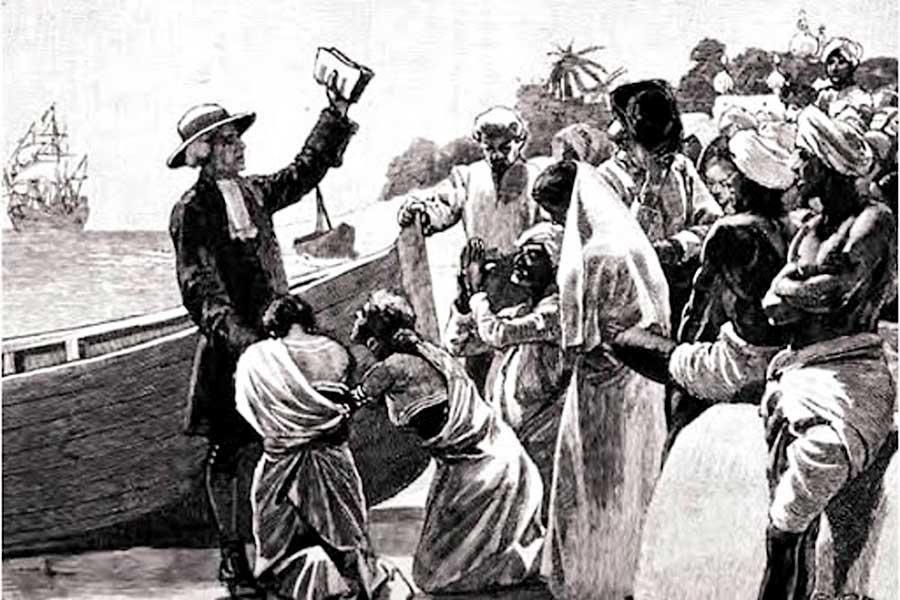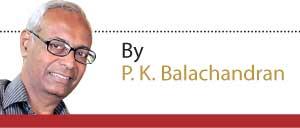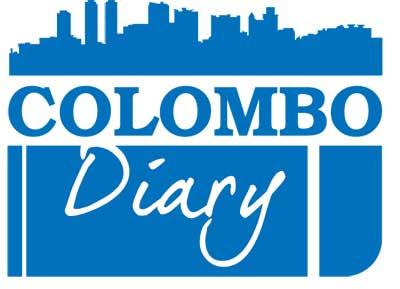Reply To:
Name - Reply Comment

Christian missionary preaching to South Indian fishermen in the 19th Century
Christianity came to South Asia in three phases: In the First phase (during First Century AD) it was brought by an unarmed preacher, St.Thomas, the Apostle. In the Second phase, between the 16th and the 19th Centuries, it was brought by the Portuguese and other colonial powers with canons to impose it, though undoubtedly, Christian institutions helped modernize local societies in course of time. In the Third phase, that is in the current era, Christianity is being propagated allegedly by offering “incentives” funded by Western donors.
The first phase was peaceful and non-controversial, though St.Thomas was killed by a disgruntled Brahmin in what is now Chennai. He sought converts from the Brahmin caste through persuasion and not force. Conversions in the second phase were quite substantially forced, though at the time of St. Francis Xavier, fishermen on the Thooththukkudi and Mannar coasts were eager to convert to escape from upper caste discrimination. In South Sri Lanka, some castes converted to escape discrimination by the Govis.
In the third phase, conversions have been peaceful and voluntary, but the phenomenon is seen by local governments and local political elites as being “unethical”. Some Indian States have banned conversions brought about by “inducements”. In Sri Lanka, the Buddhist majority has raised the red flag against West-backed evangelists.
In his paper “Colonialism, Christianity and Mission Activities in India: A Postcolonial Perspective,” Pynhunlang NM Shullai of the Department of Theology, Sam Higginbottom University, India, vividly describes conversions in India over the years. According to the Malabar Oral Tradition, St. Thomas landed in Cranganore in 52 AD. From there he went to preach among the Jewish colonies in Chennai, converted Brahmins, established seven churches, and appointed a priest.
The second phase of conversions followed the discovery of a sea route to India by Vasco Da Gama, a Portuguese navigator, in 1498. The colonial era in India began four years later in 1502 when the Portuguese set up a trading center at Kollam in Kerala. In 1505King Manuel I of Portugal appointed Dom Francisco de Almeida as the first Portuguese Viceroy in India. The same year, the Portuguese had landed in Sri Lanka too.
Vasco da Gama and his successors came as traders, conquerors and missionaries. Historian K. M. Panicker, in his book “Asia and Western Dominance,” says the following about Vasco Da Gama: “The Captain General’s ship flew on its mast a flag on which was painted a large Cross of Christ and also carried canon, symbols of the new power entering the East.” He further says: “The missionaries brought with them an attitude of moral superiority and a belief in their own exclusive righteousness. The association of Christian missionary work with aggressive imperialism introduced political complications. That diplomatic pressure, extra-territoriality and sometimes support of gun-boats had been resorted to in the interests of foreign missionaries could not be easily forgotten.”
Researcher Shullai quotes Hans-Ruedi Weber as saying in his book: “Asia and the Ecumenical Movement 1895-1961” that “no Christian can be proud of this combination of the Cross and Canon.”
D. Arthur Jeyakumar in his book: “History of Christianity in India: Selected Theme” noted that the Christian missions set up by the Portuguese were located within the range of their gunboats. In the 16th Century,Tamil Nadu’s Pearl Fishery Coast (the Thooththukkudi coast), saw mass conversions being carried out by St. Francis Xavier, under Portuguese military protection. Under Portuguese rule, churches were built and missionaries were paid with State funds. The British-Indian government patronized the Anglican church, as it was the official church. Till independence, the government of India had an Ecclesiastical Department and the Archbishop was a member of the Viceroy’s Executive Council.
In 1546, King Dom Joao III of Portugal wrote to his Viceroy in Goa to say: “We charge you to discover all the idols by means of diligent officers, to reduce them to fragments and utterly to consume them, proclaiming rigorous penalties against those who shall celebrate in public or in private any festivities which have any Gentile taint.” He further said that Christian converts, “should also be encouraged with some temporal favours, such as greatly mollify the hearts of those who receive them.”
 According to the Sinhala Commission Report of 1997, the Portuguese wrought havoc in Sri Lanka: “Buddhist monasteries were razed to the ground, and their priceless treasures looted, libraries were set fire to. Whosoever dared to worship in public or wear the yellow robe of the ascetic was visited with death. The great institutions of Totagamuwe and Keragala, which had carried on the traditions of Taxila and Nalanda Universities were destroyed and their incumbents put to the sword. The land groaned in agony as one after another (Theros) fell, before the fierce onslaughts of the fanatical missionaries…(together) with the Buddhist religious edifices which had taken generations to build. Never were a glorious civilization and a noble culture more brutally destroyed. The work of centuries was undone in a few years.”
According to the Sinhala Commission Report of 1997, the Portuguese wrought havoc in Sri Lanka: “Buddhist monasteries were razed to the ground, and their priceless treasures looted, libraries were set fire to. Whosoever dared to worship in public or wear the yellow robe of the ascetic was visited with death. The great institutions of Totagamuwe and Keragala, which had carried on the traditions of Taxila and Nalanda Universities were destroyed and their incumbents put to the sword. The land groaned in agony as one after another (Theros) fell, before the fierce onslaughts of the fanatical missionaries…(together) with the Buddhist religious edifices which had taken generations to build. Never were a glorious civilization and a noble culture more brutally destroyed. The work of centuries was undone in a few years.”
The Portuguese used local princely differences and rivalries to impose Catholicism. Some local rulers were also ready to convert to get Portuguese help to fight their rivals. The converted Kotte King Don Juan Dharmapala gave up his rights to King Philip l of Portugal to fight Mayadunne of Sitwaka. When Dharmapala died on May 27, 1597,King Philip l of Portugal laid claim to the Lion throne of Ceylon, points out Senaka Weeraratne. However, contrary to the calculation of the Portuguese, Dharmapala’s conversion did not lead to the mass conversion of the people of Kotte. In fact, the Dharmapala became persona non grata with them.
In 1591, the Portuguese enthroned in Kandy,Dom Philip 1, a converted Prince, but he died under suspicious circumstances. In 1594, the Portuguese invaded Kandy to enthrone Dona Catherina, a baptized Sinhalese noblewoman. The then King Vimaladharma Surya made use of the public opposition to Dona Catherina’s coming, and using guerrilla warfare, routed the Portuguese. He captured Dona Catherina, and made her his queen.
In the Jaffna kingdom too, the Portuguese were using force, guile and conversion to dominate the area. Local princes in turn were going to the extent of converting themselves to Catholicism to curry favour with the Portuguese. However, when King Sa-gili II usurped the throne against the wishes of the Portuguese, and opposed the latter, he was defeated, taken to Goa and beheaded in 1619. His family was forced to become Catholic priests or nuns so that the Royal family had no progeny.
The Dutch replaced the Portuguese in Ceylon in the 17th Century and tried to force Protestantism on native Roman Catholics. Catholic churches were taken over and Portuguese priests were driven out of the island. In the North (Jaffna), the Dutch used force to convert everybody to the Dutch Reformed Church. The Dutch also made baptism compulsory for those who wanted school admissions and government jobs.
In 1659 in India, the Board of Directors of the East India Company resolved that “it is their earnest desire by all possible means to spread Christianity among the people of India an allowed missionaries to embark on their ships.” But this resolution was ignored till the British parliament gave Christian missionaries freedom to work in India without licence in 1823. Many British officials supported evangelism. Shullai quotes Duncan B. Forrester’s “Truthful Action: Exploration in Practical Theology” to say that “the missionaries generally understood British Rule as a providential ordering, a sign of God’s care for India.”
With support from the British government, missionaries spread English education and healthcare for the benefit of the masses all over India and Sri Lanka. They uplifted depressed castes like the Nadars and Thevars in Tamil Nadu. The American Protestant missionaries made Jaffna Tamils an educated class of loyal government servants. Many landed families in Sri Lanka converted to be close to the British rulers.
In Bengal, William Carey, along with Joshua Marshman and William Ward, founded the Serampore College with Arts, Science, and Theology Departments in 1818. Carey founded the Bengal Asiatic Society for Cross-Cultural understanding; translated the Ramayana from Sanskrit to English and published it in three volumes. He fought against “Sati” or the burning of widows in the funeral pyres of their husbands.